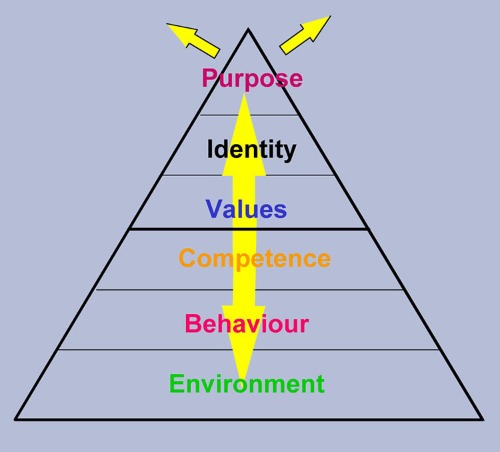Dilts Logical Levels Model
This very effective model developed by Robert Dilts enables us rapidly to analyse an organisation and provides a simple basis for discussing the major aspects of its current situation and desired future. In a workshop environment it helps identify issues that can then be discussed and resolved with a shared ownership, leading to increased co-operation and motivation.

Copyright 2021 Brefi Group Limited
It can be used for companies, divisions, departments, teams and individuals. In addition to reviewing the organisation in terms of each level we also take care to consider the relationship between the levels in order to ensure that the whole organisation is congruent and in harmony with itself. It can also be used to discuss relationships between departments and with external stakeholders.
This model is particularly useful in ensuring a strong relationship between the top three levels of purpose, identity and values, and the more practical levels.
Analysis of an individual or organisation provides a simple basis for discussing the major aspects of the current situation and desired future, and thus identifying suitable interventions. It can be used for collecting information, identifying lack of congruence between levels or between organisations, for deciding the most effective place for an intervention to achieve change, or for preparing a specification – e.g. a job description or mission statement.
Of particular importance are the top three levels of purpose, identity and values. However, values are about behaviour; and behaviour is what is actually experienced by others.
Each level higher is progressively more psychologically encompassing and impactful.
A belief, outcome may be considered from different levels:
- spirit or strategic vision - What is my intention or purpose for this?
- identity - Who am I to be?
- beliefs and values - What are my beliefs?
- capability - What am I capable of doing?
- behaviour - What am I able to do?
- environment - In what context does this behaviour occur?



